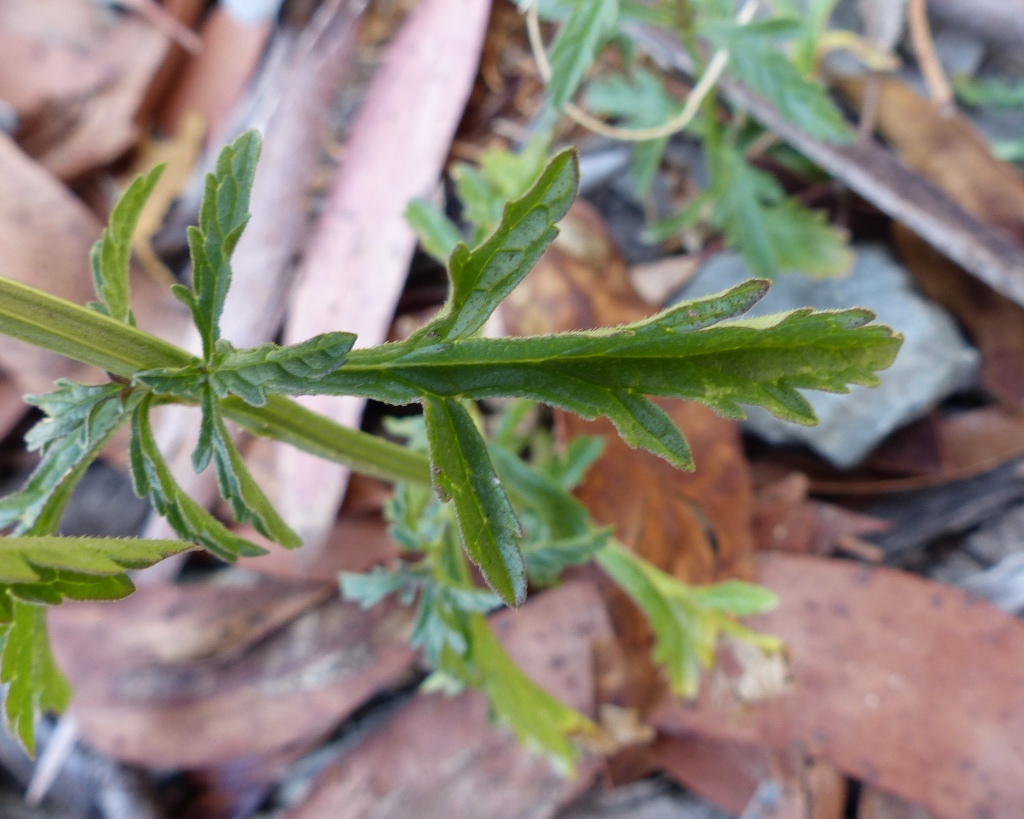Verbena officinalis var. monticola
MunirStem and branches puberulous or almost glabrous when old, somewhat purplish. Lower leaves dentate to deeply lobed, segments to 25 mm long, acute or obtuse, sparsely pubescent with closely appressed hairs and becoming glabrescent adaxially; upper leaves entire to pinnatisect, elliptic or narrow-elliptic in outline. Inflorescence with abundant glandular hairs, eglandular hairs absent or occasional. Flowers distant in lower part, both sessile and with short pedicels; pedicels 0.5-1.5 mm long, glandular; bracts ovate, up to half the length of the calyx, glandular and puberulous abaxially, glabrous adaxially, ciliate along the margins. Calyx glandular and pubescent outside, glabrous inside. Corolla glabrous to glabrescent outside, somewhat broader near the top. Flowers Nov.– Feb
VRiv, EGL, HSF, VAlp. Also ? NSW. Known only from a few collections from Mount Buffalo, Mt Evelyn, Milawa and Orbost. On Mount Buffalo, the type locality, it grows in a roadside depression in montane forest on a granitic slope.
Verbena officinalis var. monticola and Verbena officinalis var. gaudichaudii appear to be the only Verbena taxa that are likely to be native to Australia.
 Spinning
Spinning